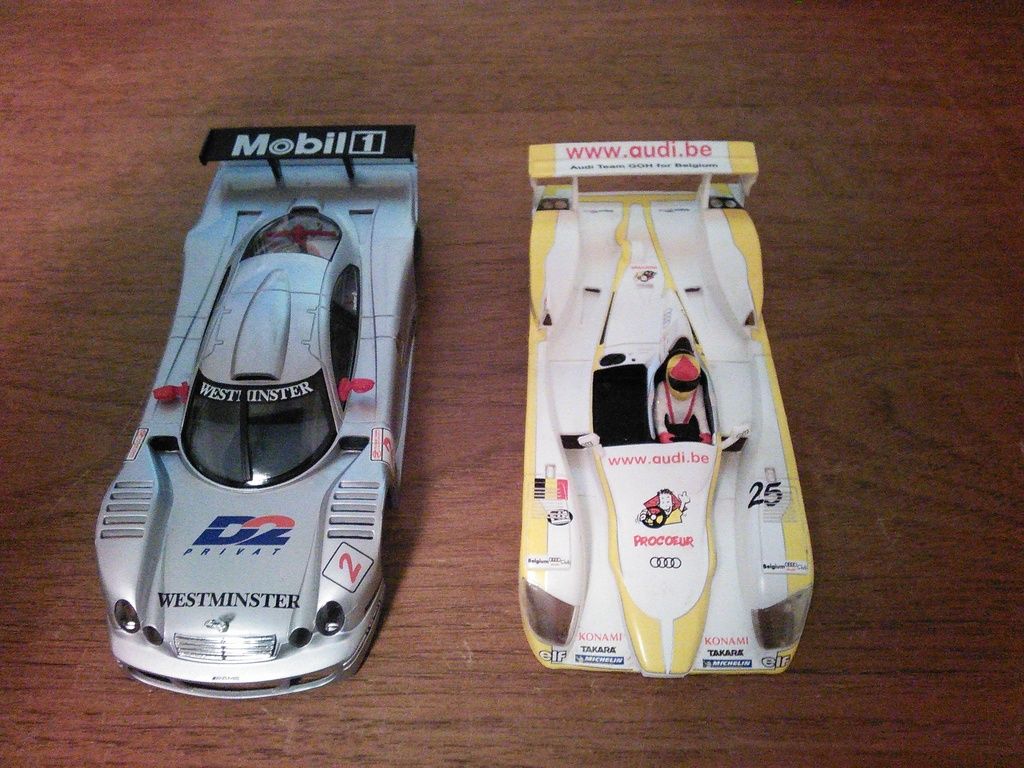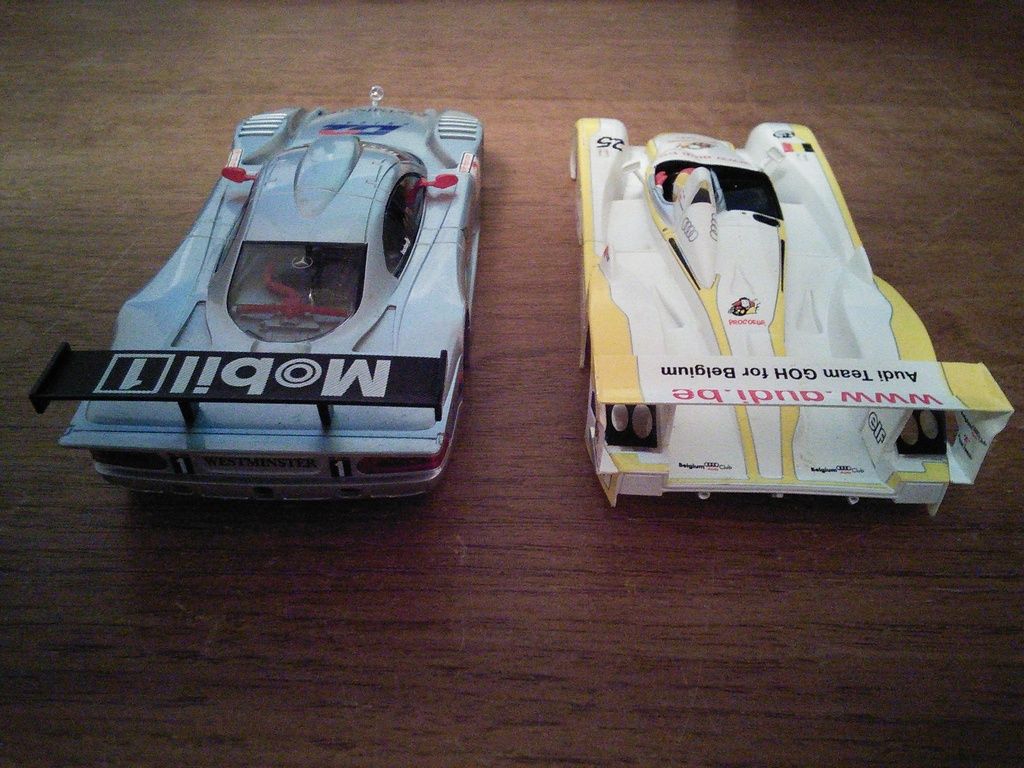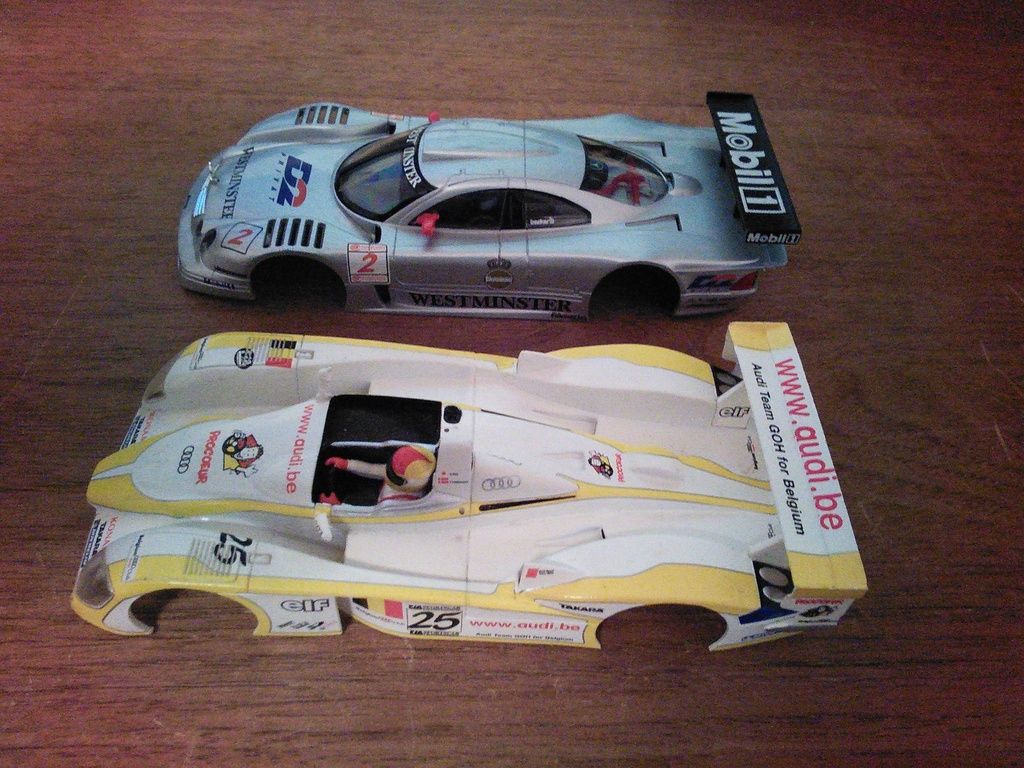Nevertheless, I placed an order with Wes for 2 cars and controller/transmitters plus some other parts. Looking back, I’m certain that if I had had the option to buy ready-to-run vac formed cars as depicted in the photos on Wes’s website or the unfinished body kits which I did in fact buy, I would have ordered at least one ready-to-run painted car, even if it cost $20 USD more. Now that I know that Wes’s system works very well, even in the case of an outdoor garden track, and knowing the difficulty involved finding, buying, and modifying highly detailed bodies to fit the mag chassis, I’d gladly pay and extra $35 USD for a ready-to-run car with a detailed body as in the photos below.
Because of my strong preference for detailed bodies, I ordered 2 slot car bodies 6 days ago on ebay. Received both yesterday.

Paid $14 USD including shipping for the used Hornby 1998 silver Mercedes CLK LM which I won at auction. It’s in excellent condition. It weighs a heavy 40 gr.

Paid asking price of $12 USD including shipping for new SCX 2002 white Audi R8. It weighs only 18 gr.

By way of comparison, a standard painted vac formed mag racer body weighs 9g -12 gr.
The width of both models pictured above is extremely accurate and the same, which is true of the full scale race cars. The front track (tread) of a standard 1/32 mag racer is 2.0”, which is 64” at 1:1 scale. The rear track of the standard mag racer is slightly less that 2”, about 61” at 1:1, but can be easily increased 0.06” (about 2.0” at 1:1). The standard front and rear track of a mag racer chassis will fit these 2 slot car bodies fine without modification. Of course the standard 3.0” (96” at at 1:1) wheelbase will have to be increased and some parts of the frame may have to be cut away, especially in the case of the Audi.
I agree with Markus and Keld that ready-to-run cars are needed to grow the popularity of magracing. Ideally these cars would have painted and highly detailed bodies. I believe that finely detailed ready-to-run cars are more important than ready-to-run track. The track is easy and inexpensive to make, especially if kept indoors. Nearly anyone can do it. It takes a high degree of skill and specialized equipment to paint and decorate a plain injection molded body and none of those are currently available to fit, without modification, to a magracing chassis. Perhaps Wes should offer one customized ready-to-run car with a highly detailed body as pictured above. Maybe he could buy a dozen such slot car bodies from the manufacturer for $10 USD each, modify the chassis and body as needed, attach the body to the chassis and charge $40 USD more for the customized ready-to-run cars compared to the standard chassis and body kit. The cost of the customization is all labor and certainly $30 USD would not adequately compensate him or me for the time involved but it would be an inexpensive way to test the market for highly detailed ready-to-run cars. It also would make people aware of the customization possibilities of mag racing which is important to hobbyist who like to tinker and prefer realistic cars.
Finally, while Wes is correct in that “ Many thousands of [model railroading] enthusiasts spend hundreds of hours building their tracks”, I’ll bet none of them started out in the hobby building their first engine or rail car from a kit. We have to make it easy for people to get started. A ready-to-run car will do that and a beautiful, finely detailed car will entice them to try it. (Even more so if a beautiful woman comes with it.)





